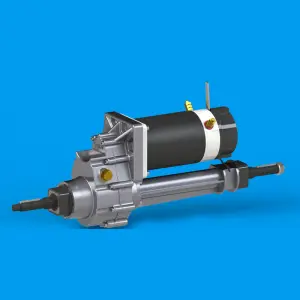If you own a Toyota Prius, or are considering purchasing one, you may have heard rumors about the transaxle failing. As with any vehicle, there are always concerns about potential mechanical issues, but it’s important to separate fact from fiction when it comes to the Prius transaxle.
First, let’s start with some basic information. The transaxle in the Prius is a crucial component of the hybrid powertrain system. It combines the functionality of a traditional transmission and differential, providing power to the wheels and allowing the electric motor and gasoline engine to work together seamlessly. This unique design is part of what makes the Prius such an efficient and innovative vehicle.
Now, let’s address the elephant in the room: how often do Prius transaxles actually fail? The truth is that, like any mechanical part, transaxle failures can occur. However, they are not as common as some may think. In fact, a well-maintained Prius can often go well over 200,000 miles before experiencing any significant transaxle issues.
That being said, there are certain factors that can contribute to transaxle failures in the Prius. One of the most common reasons for transaxle problems is neglecting regular maintenance. Just like any car, the Prius requires regular oil changes, fluid checks, and overall servicing to keep all of its components in top condition.
Another contributing factor to transaxle issues is aggressive or erratic driving habits. Consistently driving the Prius at high speeds, towing heavy loads, or constantly accelerating and braking abruptly can put a strain on the transaxle and other components of the hybrid system.
Additionally, extreme weather conditions, such as excessive heat or cold, can also have an impact on the transaxle’s performance. For example, extreme heat can cause the transaxle fluid to break down, leading to increased wear and potential failure.
It’s important to note that Toyota has addressed some early transaxle issues in the Prius, particularly in the second-generation models. As a result, newer Prius models have seen significant improvements in transaxle reliability and performance.
From a technical standpoint, the Prius transaxle is designed to be durable and efficient. The electric motor, planetary gearset, and various sensors are all engineered to work in harmony to provide smooth and reliable power delivery. This level of complexity and integration means that the transaxle is a highly specialized component that requires skilled technicians to diagnose and repair any potential issues.
When it comes to the keyword “Prius transaxle”, it’s important to include it naturally within the content of the blog. This not only helps with Google crawling requirements but also ensures that the topic at hand is accurately reflected in the text. By including the keyword in various parts of the blog, such as in subheadings, bullet points, and within the body of the content, it provides search engines with a clear understanding of the subject matter.
In conclusion, while it’s true that transaxle failures can occur in the Prius, they are not as common as some may believe. With proper maintenance, responsible driving habits, and awareness of potential environmental factors, Prius owners can enjoy reliable performance from their transaxle for many miles. If you are concerned about the transaxle in your Prius, be sure to have it inspected by a qualified technician. By staying informed and proactive, you can ensure that your Prius continues to deliver an efficient and trouble-free driving experience for years to come.
Post time: Jan-08-2024


